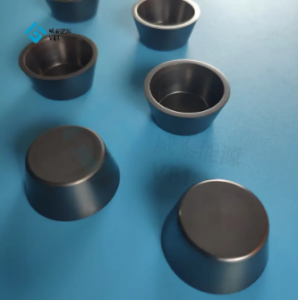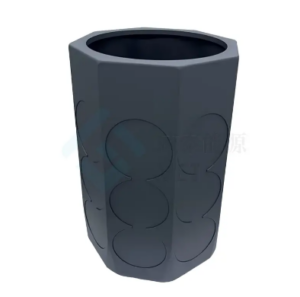
気付かないかもしれませんが、燃料電池技術のカーボン紙はクリーンエネルギーの重要な役割を果たしています。 高効率なエネルギー伝達を実現。 多孔質な構造により、ガスが自由に流れ、耐久性は過酷な条件に耐えることができます。 それなしで、燃料電池は信頼できる性能を提供するために苦労します.
要点
- カーボン紙は、効率的なガス拡散とエネルギー伝達を確保し、全体的なパフォーマンスを向上させるために燃料電池にとって不可欠です.
- コンセプト ユニークな特性、高い伝導性および気孔率を含んで、最適水管理を、汚染を防ぎ、一貫した出力を維持することを可能にします.
- 粗い条件への耐久性そして抵抗はカーボン紙をa作ります 費用効果が大きい選択 長期的なクリーンエネルギーソリューション、自動車および静止電力アプリケーションの両方をサポート.
燃料電池用カーボンペーパーとは?
定義と構成
燃料電池のためのカーボン紙 燃料電池のエネルギー転換を支えるように設計されている専門材料です。 炭素繊維から作られた薄いシートで構成されています。 これらの繊維は、軽量で耐久性のある構造物を作成するために一緒に結合されます。 製造業者は頻繁に水管理を改善するために疎水性の層が付いている表面に塗ります。 このユニークな組成物は、材料が極端な条件下でその構造の完全性を維持しながら、電力を効率的に実施することができます.
プロトン交換膜(PEM)燃料電池の役割
お問い合わせ プロトン交換膜(PEM) 燃料電池、カーボン紙はガス拡散の層(GDL)として機能します。 触媒層とバイポーラプレートの間に座っています。 その主な役割は、水素や酸素などの反応性ガスを触媒面に均等に分布することです。 これは、化学反応が効率的に起こることを保証します。 また、反応中に発生する過剰水を除去し、洪水を防ぎ、最適な性能を維持するのに役立ちます.
ガスの拡散およびエネルギー転換の輸入
ガス拡散が非常に重要な理由は疑問に思います。 燃料電池用カーボン紙は、反応部位にガスをスムーズに流すことができます。 その多孔質構造は水蒸気の脱出を聞かせている間水素および酸素が触媒に達することを可能にします。 このバランスは、効率的なエネルギー変換のために不可欠です。 それなしで、燃料電池は効率を失い、一貫した出力を提供する失敗します.
燃料電池のためのカーボン紙の利点
高い電気および熱伝導性
電力や熱を効率的に処理できる燃料電池の材料が必要です. 燃料電池のためのカーボン紙 こちらのエリアで。 炭素繊維構造により、最小限の抵抗で電気を伝導できます。 これにより、化学反応中に発生するエネルギーがスムーズに流れ、デバイスに電力を供給することができます。 また、熱を効果的に管理します。 燃料電池は副産物として熱を発生させ、カーボンペーパーはこの熱を均等に配るのを助けます。 過熱を防ぎ、安定した性能を保証します。 この高い導電性がなければ、エネルギー損失が増加し、燃料電池の効率は大幅に低下します.
ガス輸送および水管理のための気孔率
燃料電池用カーボンペーパーの多孔質な性質は、その機能性において重要な役割を果たしています。 これらの小さな気孔は、水素や酸素などのガスを触媒層に自由に動かすことができます。 同時に、反応中に生成された水を除去するのに役立ちます。 このバランスは必須です。 水が蓄積したら、ガスの流れをブロックし、効率を削減できます。 一方、素材が乾いたら反応が遅くなることがあります。 カーボンペーパーの気孔率はそれを保障します 燃料電池事業 エネルギーの安定した流れを保ち、最高の状態で.
腐食への耐久性そして抵抗
燃料電池は粗い環境で頻繁に作動します。 故障することなく、これらの条件に耐えることができる材料が必要です。 燃料電池のカーボンペーパーは例外的な耐久性を提供します。 湿気および高温に露出しても、腐食に抵抗します。 この長寿は、燃料電池が時間の経過とともに信頼性を維持していることを保証します。 代替材料とは異なり、カーボンペーパーは構造の完全性を維持し、頻繁な交換の必要性を減らします。 その耐久性は、長期的なクリーンエネルギーソリューションの費用対効果の高い選択になります.
カーボンペーパーが代替品に優れている理由
金属の網およびグラファイトのフェルトとの比較
比較するとき 燃料電池のためのカーボン紙 金属の網およびグラファイトの感じのような材料に、明確な利点に気づきます。 金属の網はよい伝導性を提供しますが、有効なガスの拡散のために必要とされる気孔率を欠きます。 また、その寿命を削減し、簡単に腐食します。 グラナイトフェルトは、一方、より良い気孔率を提供しますが、耐久性に不足しています。 燃料電池の性能を破壊できる圧力下で圧縮します。 カーボンペーパーは材料の強さを結合します。 それは優秀な伝導性、最適気孔率および長続きがする耐久性を、それの優秀な選択提供します.
燃料電池の性能を高める独特な特性
カーボンペーパーは、そんなに特別なものにするのだろうか。 その軽量構造は、ガスの流れに対する最小限の抵抗を保証します。 疎水性コーティングは、燃料電池を効率的に保つ水蓄積を防ぎます。 代替品とは異なり、炭素紙は高圧下でその形状を維持します。 この安定性は一貫したエネルギー出力を保障します。 電力と熱を効率よく扱う能力は、性能をさらに高めます。 これらのユニークな特性により、カーボン紙は現代の燃料電池の要求要件を満たすことができます.
コスト効果とスケーラビリティ
素材を選ぶときにコストとスケーラビリティが重要である 燃料電池. . 燃料電池用カーボンペーパーは性能と手頃な価格のバランスを提供します。 その工程は金属の網かグラファイトのフェルトを製造するより費用効果が大きいです。 また、自動車用燃料電池などの大型用途にも最適です。 カーボンペーパーを頼りに、予算を壊さずに高い性能を発揮できます。 クリーンエネルギー技術の進歩に理想的な素材です.
ヒント 燃料電池の材料を選ぶときは、常に耐久性、効率性、コストを考慮します。 カーボンペーパーはこれらの箱をすべて点検します.
アプリケーションと現実世界への影響
自動車燃料電池
持続可能な輸送のためのプッシュで牽引を得る自動車燃料電池を参照してください。 水素を電気に変換することにより、これらの燃料電池電力電気自動車(EV). 燃料電池のためのカーボン紙 ここで重要な役割を果たします。 効率的なガス拡散とエネルギー変換が確実で、車両のパフォーマンスに不可欠です。 この材料によって、燃料電池は長い運転範囲のために必要な高い発電密度を提供します。 大手自動車メーカーは、排出量を削減し、グローバルサステイナビリティの目標を達成する技術を採用しています。 燃料電池を使用することで、性能を損なうことなく、クリーナー環境に貢献します.
静止した電力システム
燃料電池は車だけではありません。 彼らはまた、固定電力システムのための信頼できるエネルギーを提供します。 家庭、企業、遠隔地に電力を供給するシステムです。 燃料電池のためのカーボン紙はこれらのシステムが効率的に作動することを保障します。 耐久性と導電性により、長期使用に最適です。 残留中の燃料電池や、オフグリッドの場所における主要なエネルギー源として供給することができます。 このアプリケーションは、多様なエネルギーニーズに対応する燃料電池の多様性を強調しています.
ポータブルおよび新興クリーンエネルギー技術
ノートパソコンやドローンなどのポータブルデバイスに電力を供給する燃料電池に気づくかもしれません。 また、このクリーンエネルギーソリューションの恩恵を受けています。 燃料電池用カーボン紙は、コンパクトで効率的な設計を可能にし、これらの革新をサポートしています。 軽量でスケーラブルな性質で、ポータブルな用途に最適です。 燃料電池は、新しい技術が出現するにつれて、クリーンエネルギーの進歩に重要な役割を果たしていきます。 これらのソリューションを採用することで、イノベーションと持続可能性を促進します.
燃料電池技術のカーボンペーパーはきれいなエネルギーの未来を運転します。 導電性、気孔性、耐久性により、優れた材料となります。 あなたはその恩恵を受ける 効率および信頼性 燃料電池で。 持続可能なエネルギーの需要が高まるにつれて、この材料は革新と環境の進歩をサポートし続けます.
よくあるご質問
燃料電池に欠かせない炭酸紙は?
カーボンペーパーは有効なガスの拡散、水管理およびエネルギー転送を保障します。 そのユニークな特性は、信頼性が高く、高性能な燃料電池のために不可欠です.
燃料電池でカーボン紙を再利用できますか?
いいえ、カーボンペーパーは再使用可能ではないです。 長期使用のために設計されていますが、摩耗するか、または効率を失えば交換しなければなりません.
カーボンペーパーは燃料電池の効率を改善する方法か?
伝導性と気孔性は、ガスの流れとエネルギー変換を最適化します。 これはエネルギー損失を減らし、一貫した出力を保障し、全面的な燃料電池の性能を高めます.






